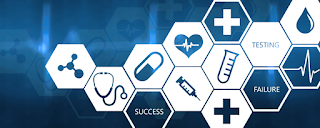The end users of medical simulation, which is leveraged to train and teach medical professionals about different types of surgeries and teach students about anatomy and physiology, include hospitals, academics, and military, among others. Depending upon the products and services, the global healthcare/medical simulation market can be segmented into computed tomography, high fidelity mannequins, magnetic resonance imaging, live environments, serious game, simulated clinical environment, positron emission tomography, fidelity trainers, performance recording, cardiovascular simulators, imaging simulation, IV simulators, surgical simulators, interventional simulators, mid/low simulator, ultrasound imaging, and healthcare/medical simulation training services.
The global Healthcare/Medical Simulation Market is characterized by the presence of numerous small players that operate in different segments in the regional markets. They are providing stiff competition to the dominant market players by denting their market shares. This has prompted the big names in the industry to invest heavily in developing new technologies and improving their existing products. Overall, the global market for healthcare/medical simulation is fragmented and is forecasted to grow at a robust pace in the near future on account of the robust competition between small and big players.
Request to View Brochure of Report -
Major growth drivers in the global market for healthcare/medical simulation are the rising healthcare costs and growing demand for minimally invasive treatments. Increasing concern over patient safety is another crucial growth driver. As per the Institute of Medicine, about 44,000 to 98,000 deaths are caused very year globally because of medical errors during treatment. This has significantly upped the demand for healthcare/medical simulation as it helps doctors and surgeons to understand better the procedures and avoid fatal missteps while treatment or surgery.
Medical simulation leverages haptic and virtual and reality technology. Haptic technology makes use of the sense of touch by applying forces, vibration, and motions to aid in realistic and multisensory learning. Virtual and reality technology on the other hand leverages computer simulated environment. It assists surgeons to learn surgery sans actual patients.
Besides the aforementioned growth drivers, another factor slated to boost the market substantially in the years to come is the swift pace of technological innovation resulting from the stiff competition among existing market players wanting to improve their sales by offering more advanced and sophisticated products. This would also help address the prevalent challenges in the field of medical simulation, tackle compliance issues, and satisfy the unmet needs of the market. Deterring the growth in the market, however, is the expensiveness of the simulators.

Comments
Post a Comment